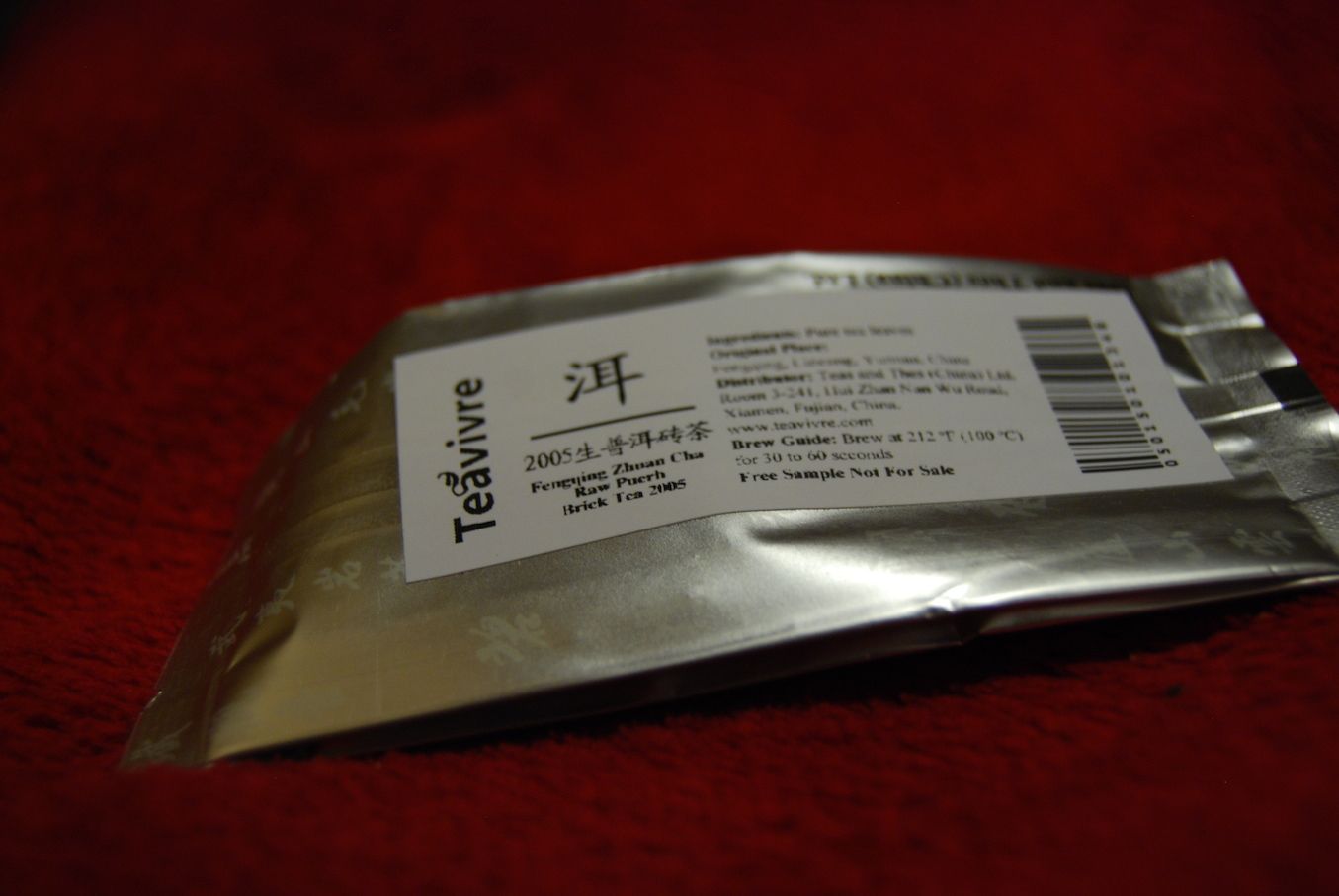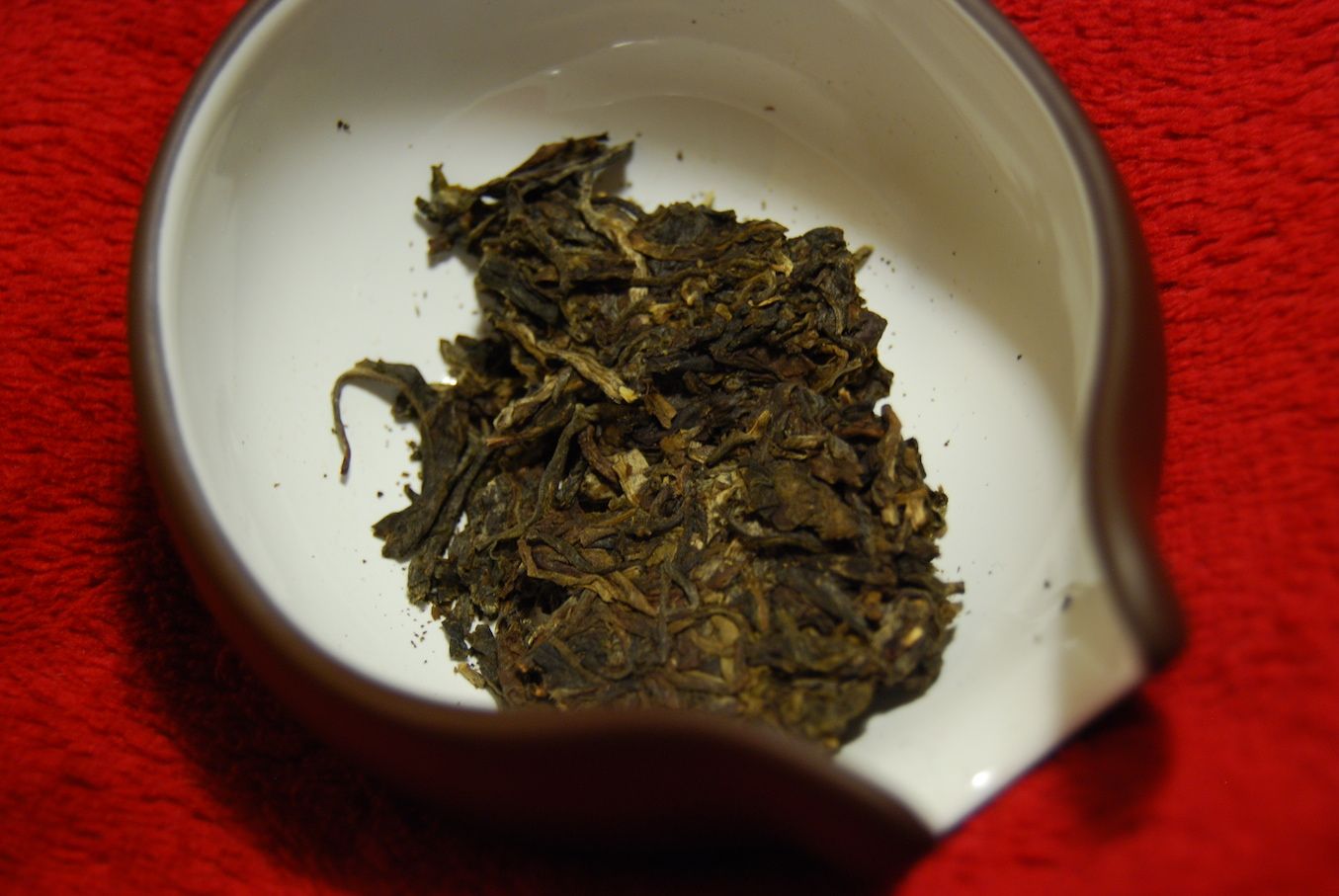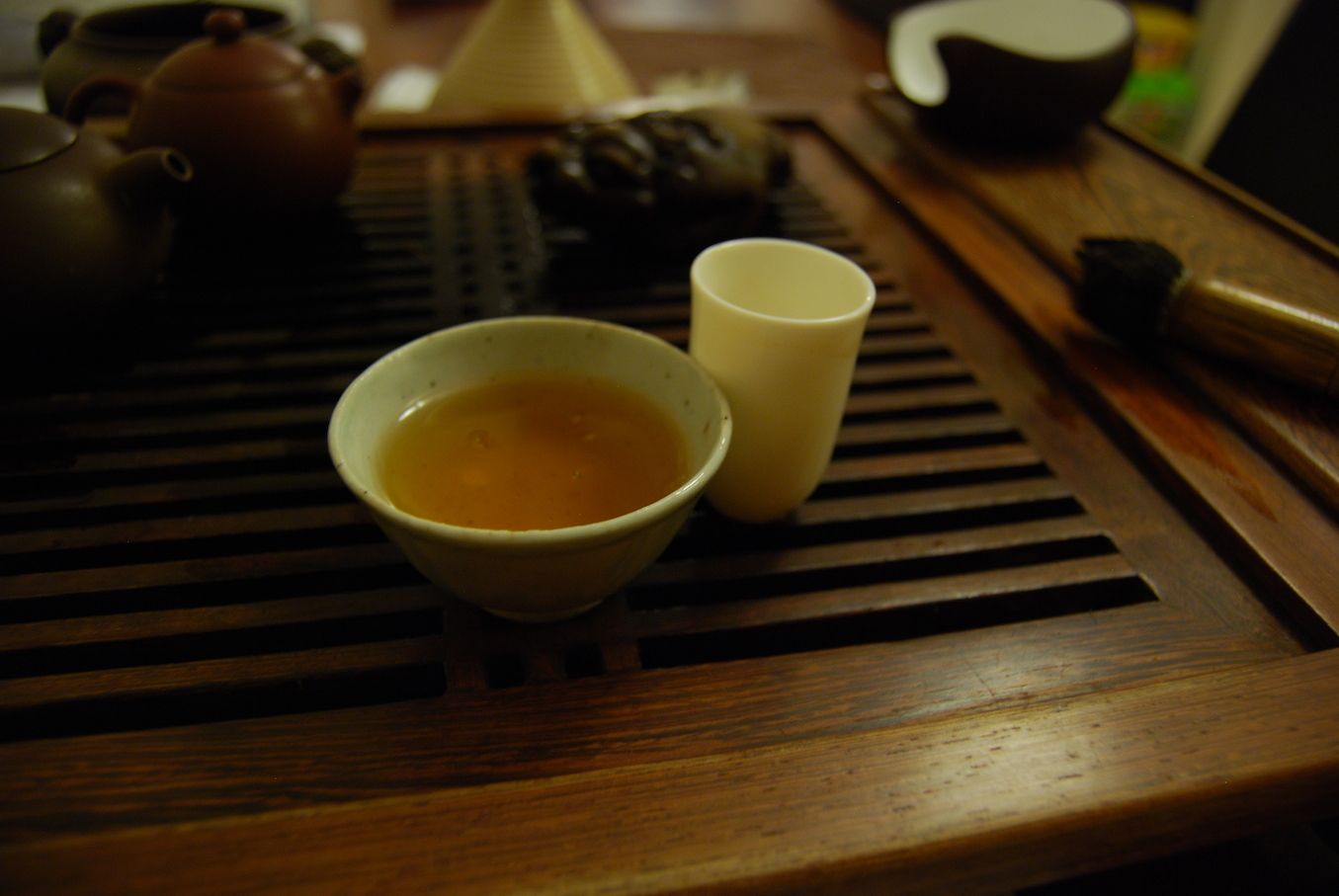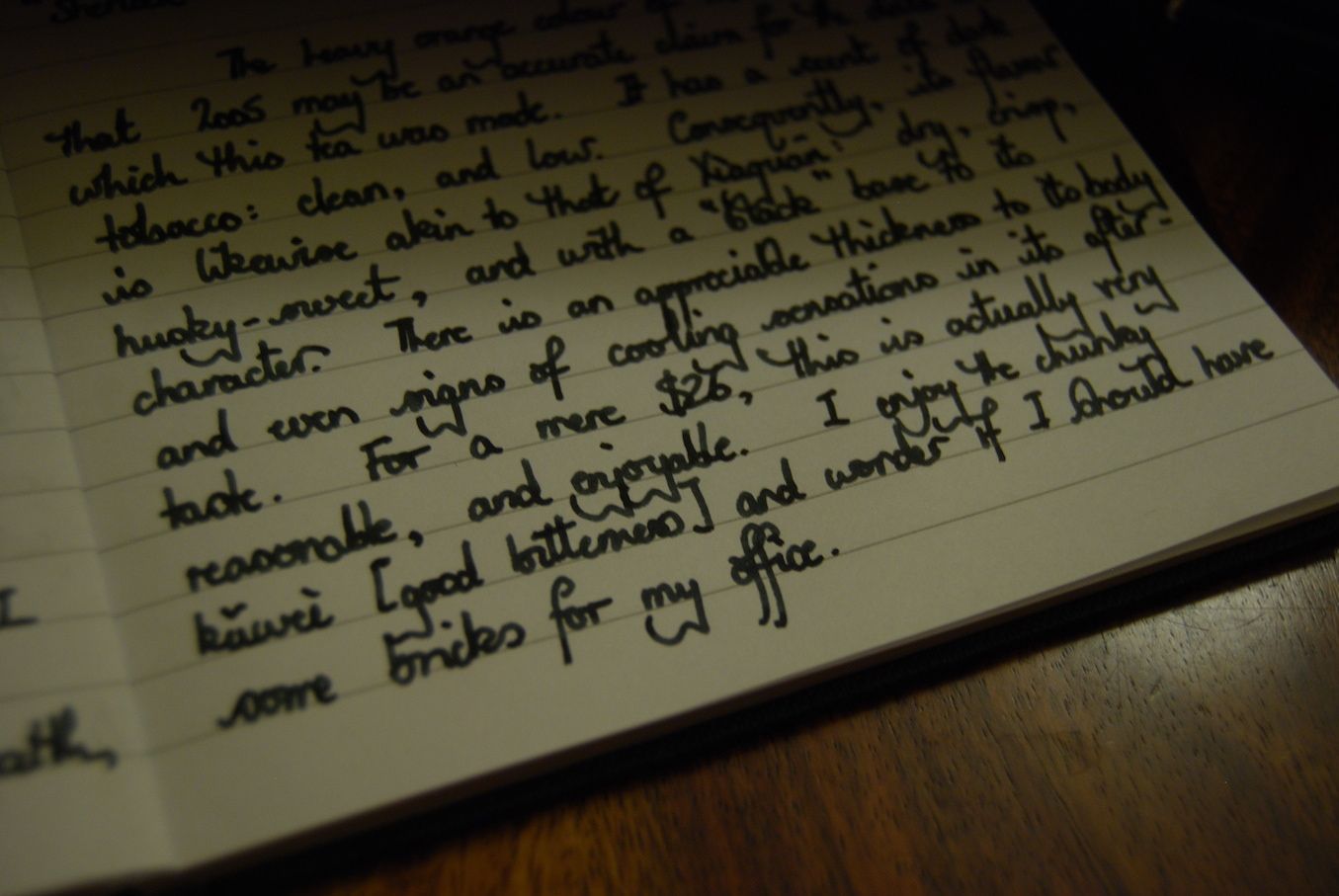I have no Fengqing [fung-ching] for years, and suddenly two crop up at once. I recently enjoyed a 2002 Fengqing tuocha thanks to ME, and today is the turn of a 2005 zhuancha [brick tea], thanks to TeaVivre.
I have come up with a sneaky remedy for photography at dawn: employ a pretty background colour and use a direct lamp. Suddenly, it doesn't look quite so bad. It only took me half a decade of pre-dawn tea photography to get there, but better late than never...
Zhuancha is usually the rancid buttock of the pu'ercha world. If your tea is too unspeakably macabre to turn into a real cake, or even tuocha, then just collect as much leftover leaf as you can and chuck it into the brick-mould. Most bricks are really rather bad. Looking at the leaves used in this brick, we can see that there are, at least, one or two tips included and it's not made entirely out of fannings. Things are looking up.
By the time the heavy, thick soup has revealed itself, I am beginning to wonder if this brick isn't something rather special. Let's examine the facts: it has a fresh, sweet scent when dry, and a pinelike woodiness when wet. Its base is solid tobacco - not the "black" base of some modern Xiaguan, but getting towards it. There is an agreeable thickness to its body, and even signs of a cooling character in its aftertaste.
Its husky sweetness builds throughout subsequent infusions, along with a decent kuwei [good bitterness] that is neither too easygoing nor too harsh. It is straightforward tea, but it is very reliable and brews consistently. Perhaps best of all, this little chap is a mere $26 / 250g. In light of its price, the bargain sensors are beginning to saturate. I should grab some of these for my lab - they have a challenge, and plenty of endurance. A surprise win.





I asked the head of the Canadian branch of The Best Tea House about this assumption (which I think predominates, certainly, in the pu-er blogosphere) about quality of material in bricks always being inferior to cakes.
ReplyDeleteI was surprised, but he denied this; he basically said that the reason bricks are cheaper originates with the fact that the 250 g bricks we're used to are one slice of a much larger brick that can be easily put into a mold and sliced off, as where cakes, as you know, can not so easily be partitioned from a larger whole.
Now it may very well be the case that because of the logistics of these mechanics, it has prompted most manufacturers to use higher quality material for cakes in the first places, since just putting tea into a cake seems to take more work than a brick due to shape, one variable following another. And certainly, all my personal experience has confirmed the fact that cakes tend to be of higher quality than bricks. But I don't know, an interesting consideration.
Dear Nick,
ReplyDeleteThank you for the notes! I have not heard such a claim before, but it could easily have been true at one time. Perhaps my own experience is biased, but I seldom have zhuancha that is made from anything other than really basic mulch. :)
Toodlepip,
Hobbes